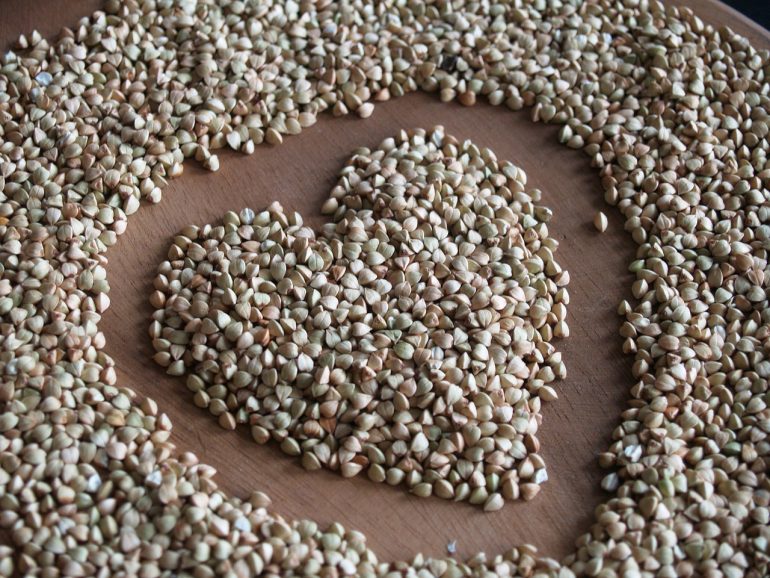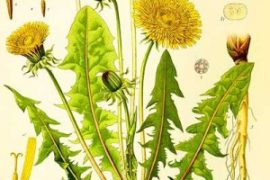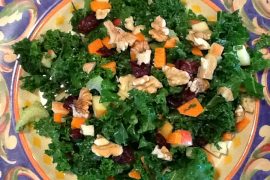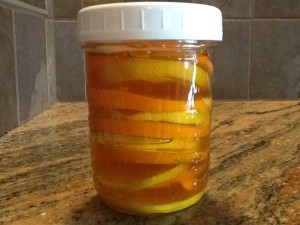Buckwheat offers numerous health benefits. Despite its name it’s not a grain, it is actually a pseudo cereal; a grain like seed that’s related to sorrel and rhubarb. Pseudocereals are plants that produce fruit or seeds. These “seeds” are frequently consumed as grain substitutes.. They are also typically high in protein as well as vitamins and minerals. Many ancient grains are pseudocereals, such as quinoa, amaranth, chia, kaniwa and wattleseed. Because pseudocereals are gluten free, they are a great option if you are gluten intolerant or have a gluten allergy.
Life Extension Magazine states “Two of buckwheat’s most important nutrients include D-chiro-inositol and rutin. Buckwheat is the greatest natural source of D-chiro-inositol,1 a compound that reduces glucose levels and can be used as a treatment for diabetes.2,3 The flavonoid rutin is known for its anti-inflammatory and platelet aggregation-inhibiting effects.4
Accumulating evidence demonstrates that buckwheat can be beneficial for managing diabetes,2,3,5 cardiovascular disease,5,6 arthritis,7 allergies,8 and obesity.5”
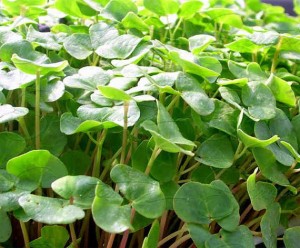
14 Facts & Benefits of Buckwheat
- Buckwheat is not a grain-Despite its name buckwheat is not from the wheat family. It is sometimes listed as a grain, but it’s actually a grain like seed that’s related to sorrel and rhubarb.
- Great source of fiber-Buckwheat is fiber rich, containing both soluble and insoluble fiber. Foods rich in fiber help to keep your bowels moving regularly. Just one cup of buckwheat contains a whopping 16.90 grams of fiber.
- Quick harvest-Buckwheat can be harvested a mere 10-12 weeks after planting. With its quick growing time it’s less likely to be sprayed as frequently with pesticides and other chemicals to enhance growth. Buckwheat also grows flowers which help to feed the honeybees.
- Gluten free-Many people are thrown by the name buckwheat. Buckwheat is not a wheat or a grass. It’s actually a grain like seed that’s related to sorrel and rhubarb.
- Protein rich- Buckwheat offers a great source of plant-based protein and contains twelve amino acids, which are the “building blocks” of protein.
- Varicose veins-Buckwheat contains an abundance of the bioflavonoid rutin. Rutin is critical to the growth, support and strength of blood capillaries.
- Helps with weight loss-Buckwheat is low in calories and fiber rich, helping you to feel full and suppress your appetite.
- Diabetes prevention-Buckwheat is low on the glycemic index. The complex carbs in buckwheat are also absorbed in the bloodstream slowly offering sustainable energy and help you to feel full longer. In addition, buckwheat is high in fiber, which helps to slow down the rate of glucose absorption, making it a great choice for diabetics.
- Vitamin & mineral rich-Buckwheat contains B vitamins, plus minerals such as iron, folate, magnesium, manganese, phosphorous, potassium and zinc.
- Lowers Blood Pressure & Cholesterol-Clinical studies suggest that buckwheat can help to lower unhealthy cholesterol levels and lower inflammation. In addition rutin in buckwheat helps to fight high blood pressure and cholesterol.
- Versatile-Buckwheat is available in numerous forms such as groats, flour, noodles. The most common uses for buckwheat is porridge. It can also be used in salads as a cold grain or a delicious addition to any stew or soup. The flour is used in recipes for pancakes or breads. I frequently sprout buckwheat to use in raw food recipes or salads. “Buckwheat lettuce” is pictured in the photo above.
- Disease Fighting Antioxidants- Antioxidants including flavonoids like oligomeric proanthocyanidins are found in buckwheat’s seeds and hull, they are also present in buckwheat flour. These compounds support brain, digestive and liver health. In addition they help to fight cancer and the formation of heart disease.
- Pest Fighter-Organic growers use buckwheat as a primary pest-prevention strategy, but growing buckwheat within 20 feet of their crops.
- Weed fighter-Due to its fast growing habits buckwheat can be grown as a cover crop in fields to choke out weeds.
Buckwheat Nutrition
One cup of cooked buckwheat groats contains the following:
155 calories
6 grams of protein
1 gram of fat
33 grams of carbohydrates
5 grams fiber
Only 1.5 grams of sugar
86 milligrams manganese (34%)
86 milligrams magnesium (21%)
118 milligrams phosphorus (12%)
6 milligrams niacin (8%)
1 milligrams zinc (7%)
34 milligrams iron (7%)
0.13 milligrams vitamin B6 (6%)
24 milligrams folate (6%)
0.6 milligrams pantothenic acid (6%)
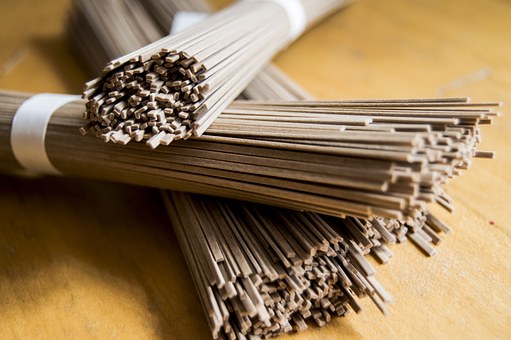
Buckwheat products to try
There are numerous buckwheat products available in grocery stores, health food stores and online. Here are a few that are commonly available.
Raw buckwheat groats–This is dried hulled buckwheat. These can be sprouted or cooked and used to make porridge, or cooked and added to soups, stews or salads. You can also grind your own buckwheat groats to make fresh flour.
Buckwheat flour-Used in baked recipes. If you buy or make buckwheat flour, it should be kept in the refrigerator or freezer and used within a short amount of time, as it naturally contains oils that can go bad quickly.
Buckwheat Soba noodles-Check the label if you’re gluten intolerant, most soba noodles contain additional flours other than buckwheat.
Kasha-This is simply toasted buckwheat groats.
Creamy Buckwheat–This breakfast cereal, like quick oats is ready to eat in just minutes.
Storing buckwheat
Place buckwheat in an airtight container and store in a cool dry place. Buckwheat flour should be always stored in the refrigerator. Stored properly, whole buckwheat can last up to one year
With all its amazing benefits and uses, how will you incorporate buckwheat into your life?
Additional References
- Available at: http://www.livestrong.com/article/267121-list-of-foods-high-in-d-chiro-inositol/. Accessed January 16, 2015.
- Hosaka T1, Nii Y, Tomotake H, Ito T, et al. Extracts of common buckwheat bran prevent sucrose digestion. J Nutr Sci Vitaminol (Tokyo). 2011;57(6):441-5.
- Kawa JM1, Taylor CG, Przybylski R. Buckwheat concentrate reduces serum glucose in streptozotocin-diabetic rats. J Agric Food Chem. 2003 Dec 3;51(25):7287-91.
- Available at: http://www.nutrition-and-you.com/buckwheat.html. Accessed January 16, 2015.
- Li SQ, Zhang QH. Advances in the development of functional foods from buckwheat. Crit Rev Food Sci Nutr. 2001 Sep;41(6):451-64.
- J He, M J Klag, P K Whelton, et al. Oats and buckwheat intakes and cardiovascular disease risk factors in an ethnic minority of China. Am J Clin Nutr. 1995;61(2):366-72.
- Kauss T, Moynet D, Rambert J, Al-Kharrat A, et al. Rutoside decreases human macrophage-derived inflammatory mediators and improves clinical signs in adjuvant-induced arthritis. Arthritis Res Ther. 2008;10(1):R19.
- Chang Deok Kima, Won-Kyung Leec, Kyong-Ok No, et al (2003). Anti-allergic action of buckwheat (Fagopyrum esculentum Moench) grain extract. Int Immunopharmacol. 2003;3(1):129-36.

